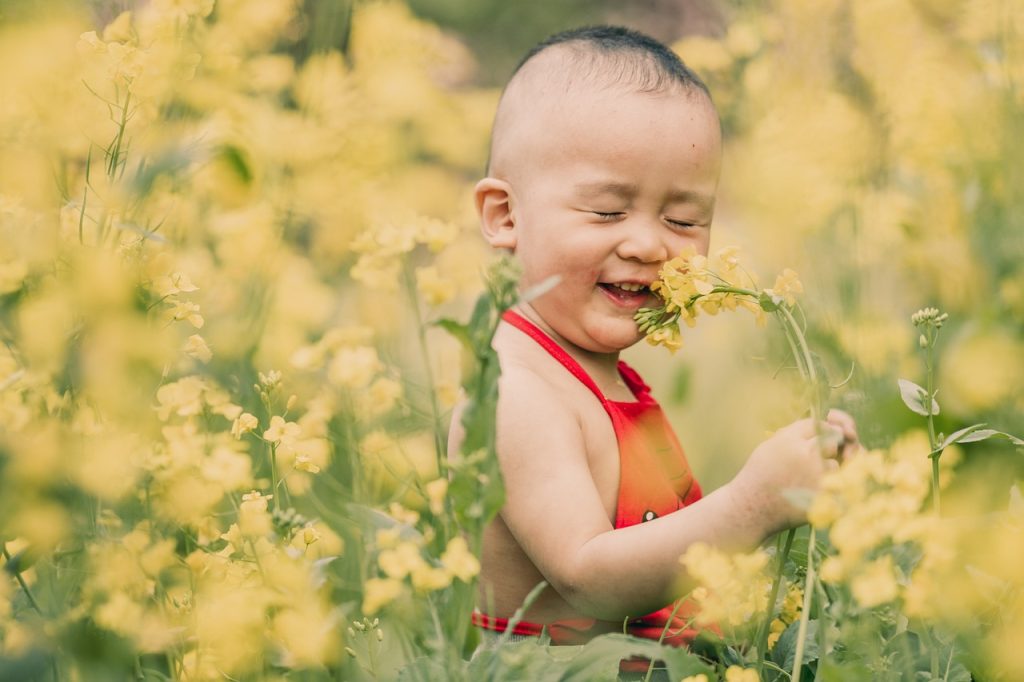
Table of Contents
Professional caregivers and parents should try at least once in a while to see the world through the fresh eyes of an infant or toddler. Imagine seeing something as simple as rain for the first time. Not just observing it, but experiencing it fully—the way the drops feel cool on your skin, the sound of them hitting the ground, the way they transform the feel of the air with humidity. For infants and toddlers, moments like this aren’t mundane; they’re immersive, full of new sensations and questions.
As adults, it’s easy to stop noticing these everyday details. The world becomes a background we move through, shaped by our routines and familiarity bias—the tendency to overlook or undervalue things simply because we’ve seen them so often. But for young children, everything is new. When we work with them, we best connect and support their growth by stepping outside our jaded perspective and embracing their sense of discovery.
Everyday Objects As Sources Of Wonder
An empty cardboard box might be a nuisance to adults, something to break down and haul to the recycling bin. To a toddler, it’s a spaceship, a fort, or a cave. A stick might be something we step over on a walk, but to a child, it needs inspection; it beckons for interaction and exploration. It’s a loose part asking to become a sword, a wand, or a prop in a newly invented game.
Even a grocery store trip, something most adults view as a chore, is a thrilling adventure in a child’s eyes. The constant motion and chatter of busy shoppers, the sound of the scanner beeping, the wafting scents of colorful piles of fresh fruits, the feel of a cold carton of milk—these are all fresh experiences, ripe for exploration.

Why Fresh Eyes Matter In Early Learning
When working with young children, it’s crucial to step out of our well-worn thinking patterns and see the world as they do, at least occasionally. Familiarity bias can limit our ability to connect with their perspective. If we view a child’s fascination with a puddle as a delay rather than an opportunity, we miss the chance to share in their curiosity. Instead, we should linger in such moments and let them learn from their interactions and observations.
Adults often overlook the richness of the ordinary. For early learning professionals, this can mean underestimating the value of open-ended exploration and mundane-to-us experiences. But when we set aside our assumptions and focus on how children experience the world, we create opportunities for growth, learning, and joy.
Benefits Of Fresh Eyes
Here are the three primary benefits of making an effort to see the world with fresh eyes:
- Understand Children’s Development—By appreciating how children interact with their environment, we gain insights into their cognitive and sensory growth.
- Foster Connection—Shared curiosity builds rapport and strengthens relationships.
- Encourage Deeper Exploration—When we join children in their discoveries, we validate their instincts to play, explore, and engage with the world.

How To Make The World Fresh
Here are some tips for seeing with fresh eyes:
- Pause And Observe—Take a moment to watch a child play. What captures their attention? What do they notice that you might have missed?
- Engage Their Perspective—Ask open-ended questions like, “What do you see?” Or “What do you think is happening?”
- Challenge Your Assumptions—Instead of rushing past a moment that seems insignificant, ask yourself, “What might make this fascinating to a child?”
- Let Go Of Outcomes—Focus less on teaching or directing and more on experiencing alongside them.
All of these things are easier if we remember that the primary job of professional caregivers is to be Right Here, Right Now, in the present moment with the children.
Fresh Eyes Wrap-Up
Children remind us that the world is bursting with things worth noticing if we take the time to look. By setting aside our adult habits of dismissal and familiarity bias and slowing down a little bit, we help children thrive. We may also rediscover the beauty and wonder of everyday life ourselves.
So, the next time you’re with a child, slow down. Let their curiosity lead. Whether it’s a pebble, a butterfly, the way sunlight streams through a window, or a basket of colorful apples, try to see it the way they do—fresh, new, and full of possibility.

Contribute content to Playvolution HQ
Brought to you by Explorations Early Learning
Browse Trainings
Post Author
Jeff Johnson is an early learning trainer, podcaster, and author who founded Explorations Early Learning, Playvolution HQ, and Play Haven.


Leave a Reply